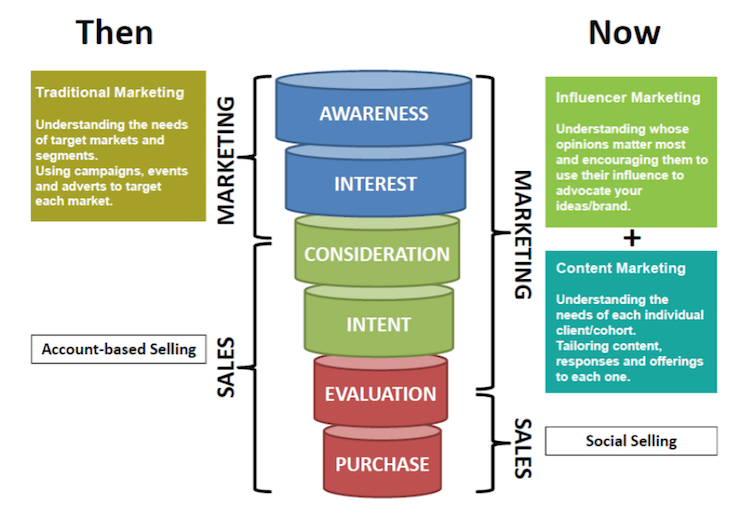Thankfully I am recently and happily married (for the second time), as the thought of ever returning to the dating scene fills me with complete dread. I wasn’t much of a ladies’ man in my twenties or even again in my late thirties after my divorce. Maybe I just didn’t understand women enough or maybe I simply wasn’t appealing enough – or both. Similarly firms have to understand their clients and how they can make their product or proposition appealing to them – but at least they have a selection of new marketing apps and marketing clouds to help them.
Marketing is on the ascent. It is rapidly becoming the most powerful and resource-rich function in any business. As the function responsible for creating and sustaining a long-lasting relationship with the most important asset of any business – its customer – it is becoming the function that drives all others.
In the new hyper-connected, mobile, always-on world, consumer expectations are changing and marketers need to shift their focus from pushing messages at people to engaging them in an ongoing conversation or relationship. Here’s how:
1. It’s not a one night stand – it’s a relationship.
Firms are moving away from a focus on transactional selling towards relationship selling where engagement is expected to grow deeper and endure over time. It requires listening, nurturing and care along with intimacy and trust.
There are a limited amount of ‘touch point’ opportunities in which if you are able to address your customers’ needs in a meaningful way, rather than put them on hold while telling them how important their call is, you can develop your relationship. Successful relationships are built on mutual appeal and shared values.
2. New marketing funnel
When dating it often felt as if all the most appealing girls were already taken. In marketing early engagement in the decision making process has always been essential, but the game has changed. According to Lori Wizdo, Principal Analyst at Forrester Research, “…today’s buyers might be anywhere from two-thirds to 90% of the way through their journey before they reach out to a vendor.” Traditional marketing techniques are at least in part becoming obsolete. Today it is all about influence and content:
- Influencer Marketing: Understanding whose opinions matter most and encouraging them to use their influence to advocate your ideas/brand.
- Content Marketing: Understanding the needs of each individual client/cohort. Tailoring content, responses and offerings to each one.
3. Agility and Authenticity
In the past, marketing departments were set up to conduct campaigns and launches, each of which featured planning, execution, analysis and then a feedback loop to help refine or adjust the next campaign. Campaign workflows were also rigid and siloed in this way. Nowadays everything is in real-time with constant dialogue, constant listening and instant response. And analytics is no longer just an up-front or follow-up exercise – it is a constant operation within an iterative and flexible workflow.
Consumers also have an expectation not only of immediacy, but also of intimacy. Where once marketing was about creating a myth and selling it, it is now about finding a truth and sharing it. It’s time to ditch the old chat-up lines and the false claims that might once have impressed your date.
Anyone can discover almost anything instantly online and circulate it to an audience of millions. You need to be authentic, to live by your values and to be confident enough to share the truth – customers appreciate it.
4. Invest in the long term
Engaged customers are like any other asset that generates value in the form of return on investment (ROl). If you understand what drives engagement and what makes one company preferred over others–and you can present it in a compelling way then any CEO or CFO will pay attention.
Often the most important factor driving engagement is a culture of customer centricity. Engagement plays a central role in the culture of any sustainable and successful business and needs to be reflected in areas in the business far beyond the marketing function from incentives, to salaries and promotions. Marketing no longer sits in a corner and runs campaigns; it interacts with almost every part of the business, from IT to customer service and logistics.
One of the best investments firms can make is in an end to end marketing cloud – many are now available. These allow firms to understand their clients, manage their client engagement and integrate their business processes to support this. The future of marketing is most definitely in the cloud.
We are aiming to return to the topics of Influencer Marketing and Content Marketing in future blogs, but in the meantime keep your eyes peeled for our next monthly #CloudInfluence rankings.
Bill is a tech industry veteran and experienced corporate marketing and communications professional with over 20 years spent working in blue chip organisations mostly in pan-European and global communications roles. He is also a regular commentator on #Cloud, #SocialSelling and #InfluencerMarketing, as well as a dad with a passion for technology, economics, politics & Arsenal FC.




